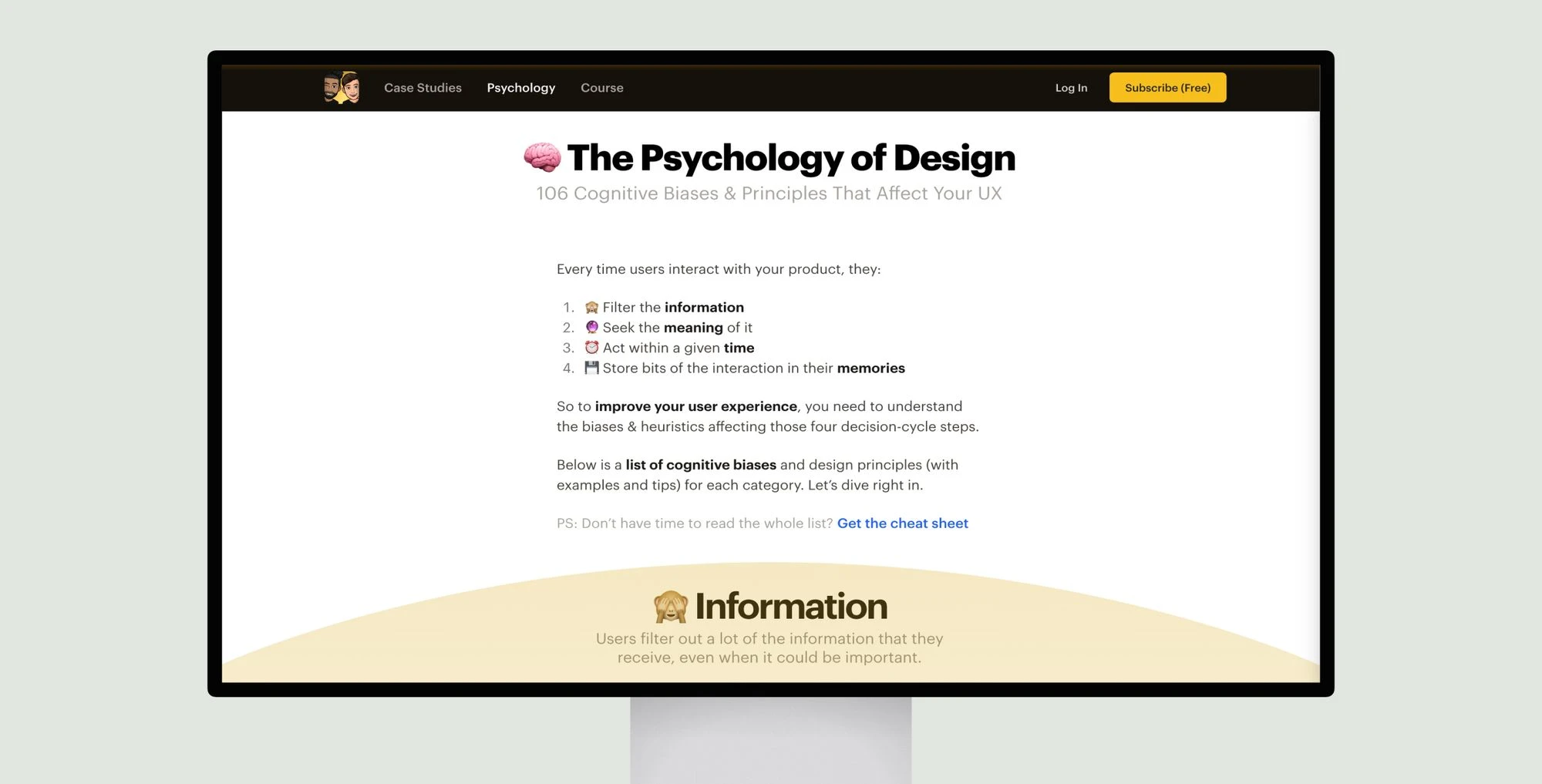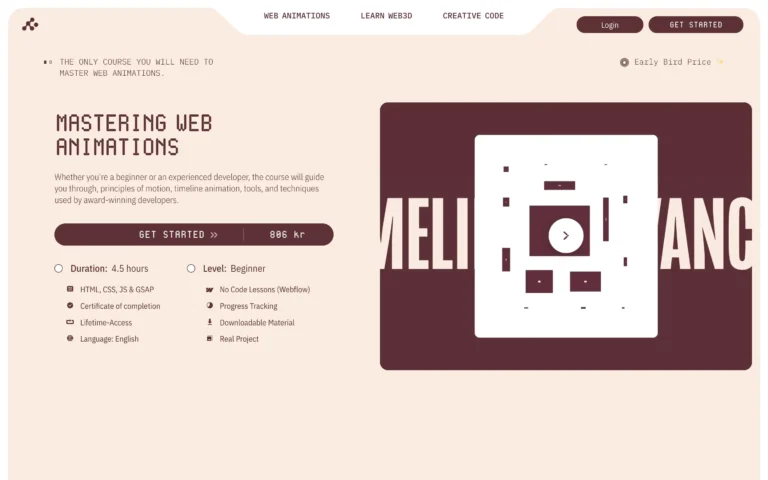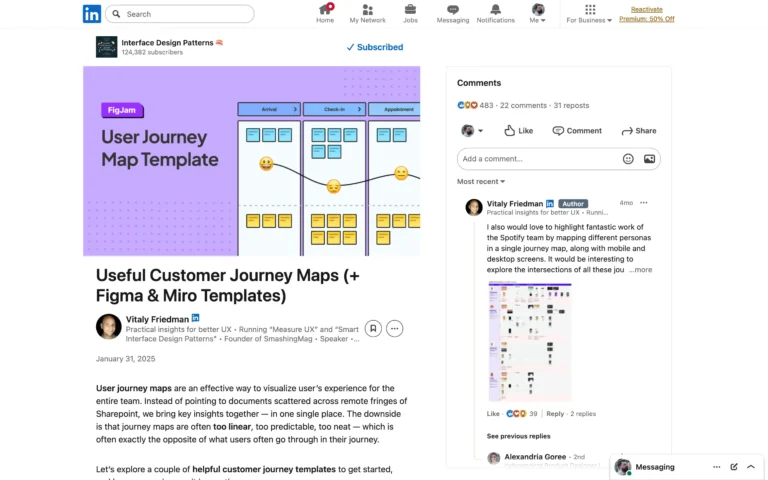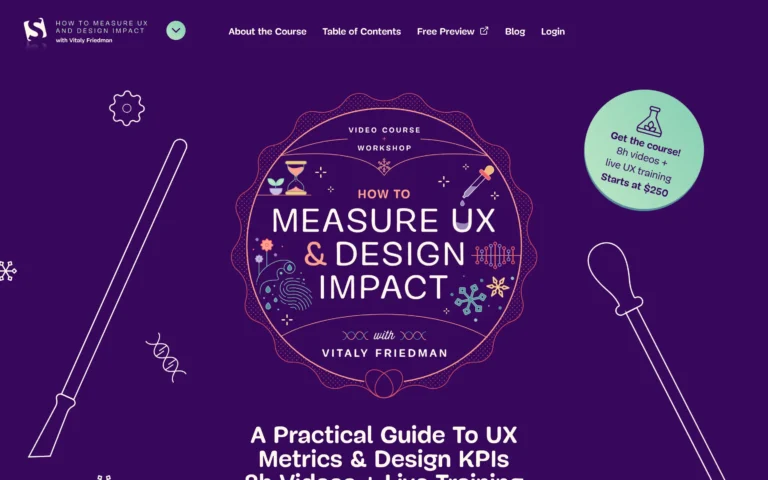The “Psychology of Design” resource from Growth.Design offers a comprehensive overview of 106 cognitive biases and principles that influence user experience (UX). It categorizes these principles into four key stages of user interaction: information filtering, meaning-seeking, action within a given time, and memory storage. Each principle is accompanied by examples and practical tips to aid designers in creating more intuitive and user-friendly interfaces.
This resource is particularly beneficial for UX designers, product managers, and anyone involved in crafting digital experiences. By understanding and applying these psychological insights, professionals can enhance user engagement and satisfaction. The structured presentation of biases and heuristics serves as a valuable reference for improving design decisions and user interactions.







